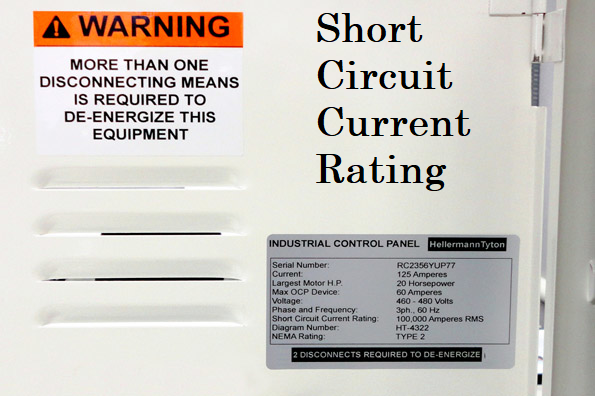Short Circuit Current Rating (SCCR) and Your Industrial Equipment
In the current National Electrical Code, the National Fire Protection Agency made changes to the ratings of industrial machines and control panels. Short Circuit Current Rating, or SCCR, is now a required metric for the nameplates of tools and panels carrying line current.
What is SCCR and why is it important for industrial safety?
SCCR is the maximum current an apparatus or system can withstand without sustaining damage. The aim in defining a fault current in this manner is to reduce the danger of arc flash to personnel and to the facility during over-current events. Chassis and all components contained within are required to be able to handle the possible fault currents produced by the circuit without discharging to the environment or to personnel. SCCR by itself cannot ensure against arc flash, safe work practices and common sense always apply.
What if my machine does not have an Short Circuit Current Rating?
In assessing SCCR in systems where the manufacturer does not provide it, UL508 uses the lowest rated component to determine the SCCR of the system. In older systems, this can result in the system not meeting current code requirements. Fortunately, there exists a methodology for replacing limiting components with higher rated ones to increase the SCCR of the whole system.
Older components not rated with a SCCR can be given a value based on the UL508A SB supplement. The resulting low value of SCCR can most easily be increased by replacing the low default value of non-listed components with newer, SCCR rated component. Other design techniques can be employed such as changing the location of the control circuits from upstream of the main over-current protection device to downstream.
Why should you and your company care about SCCR?
SCCR is useful in protecting your personnel, equipment and facility. Since the adoption of the SCCR labeling standard, most manufacturers of electrical equipment have adopted the standard. With careful component selection and design, arc flash hazards can be greatly reduced at little cost to tool manufacturers or users. LBIES uses current code and methods to ensure industrial panels in your facility are safe.
If your company is operating any machinery/tools needing SCCR calculations to regain compliance, or that be also in need of a 3rd party field label, please reach out to Lewis Bass International Engineering Services for a free on-site inspection and a list of next steps for your to take to ensure continued compliance with your city’s local regulations.



